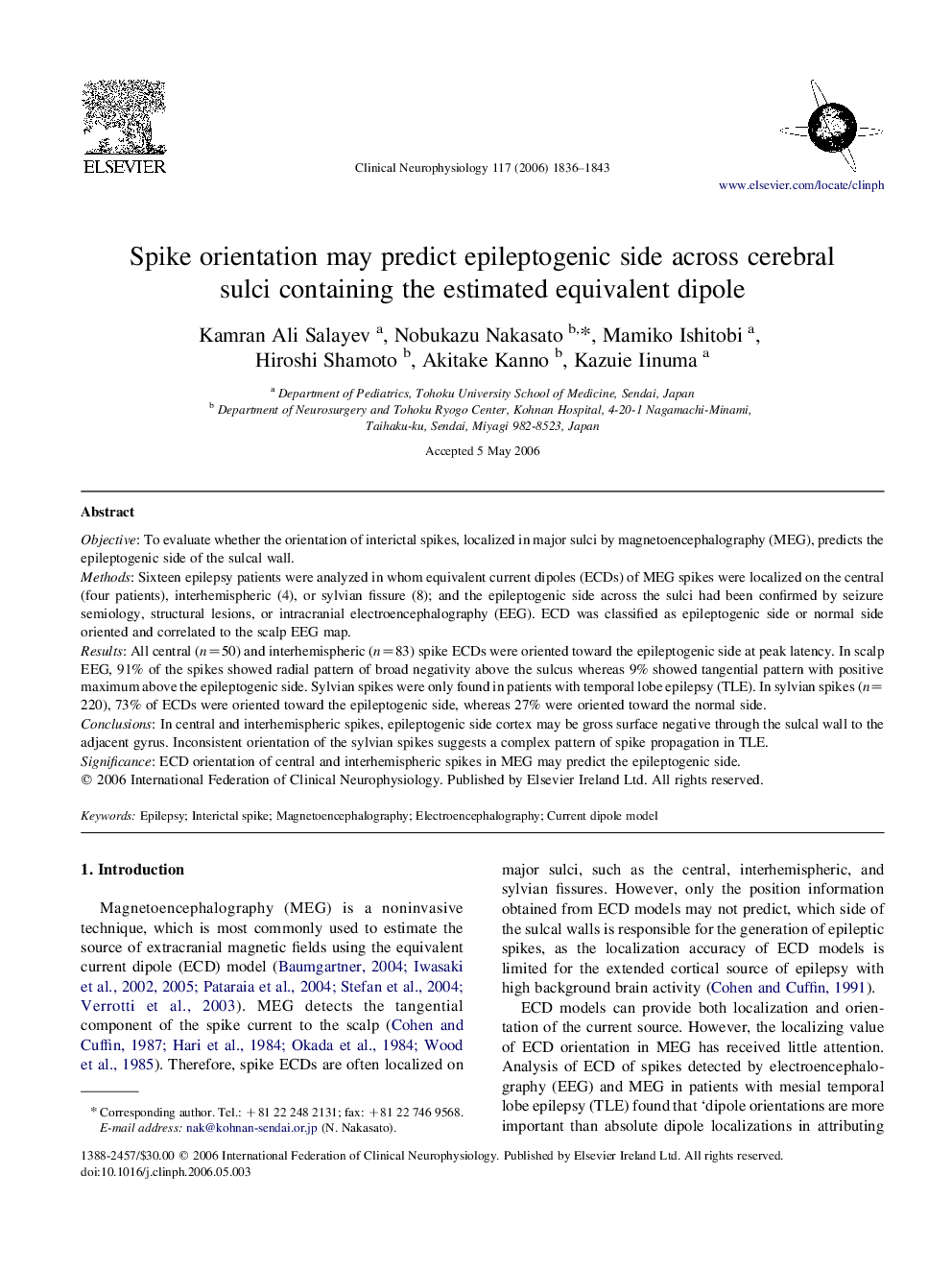| Article ID | Journal | Published Year | Pages | File Type |
|---|---|---|---|---|
| 3048676 | Clinical Neurophysiology | 2006 | 8 Pages |
ObjectiveTo evaluate whether the orientation of interictal spikes, localized in major sulci by magnetoencephalography (MEG), predicts the epileptogenic side of the sulcal wall.MethodsSixteen epilepsy patients were analyzed in whom equivalent current dipoles (ECDs) of MEG spikes were localized on the central (four patients), interhemispheric (4), or sylvian fissure (8); and the epileptogenic side across the sulci had been confirmed by seizure semiology, structural lesions, or intracranial electroencephalography (EEG). ECD was classified as epileptogenic side or normal side oriented and correlated to the scalp EEG map.ResultsAll central (n=50) and interhemispheric (n=83) spike ECDs were oriented toward the epileptogenic side at peak latency. In scalp EEG, 91% of the spikes showed radial pattern of broad negativity above the sulcus whereas 9% showed tangential pattern with positive maximum above the epileptogenic side. Sylvian spikes were only found in patients with temporal lobe epilepsy (TLE). In sylvian spikes (n=220), 73% of ECDs were oriented toward the epileptogenic side, whereas 27% were oriented toward the normal side.ConclusionsIn central and interhemispheric spikes, epileptogenic side cortex may be gross surface negative through the sulcal wall to the adjacent gyrus. Inconsistent orientation of the sylvian spikes suggests a complex pattern of spike propagation in TLE.SignificanceECD orientation of central and interhemispheric spikes in MEG may predict the epileptogenic side.
